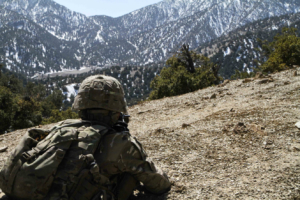The Monetary Cost of War In Afghanistan

By Debbie Gregory.
By some estimates, the war in Afghanistan has cost the U.S. somewhere between $841 billion and $1 trillion. And that doesn’t take in to consideration the human toll on those who have served and their loved ones.
The number is sure to rise, given than although President Trump has said the U.S. commitment to Afghanistan was “not a blank check,” his decision to send more troops will add billions of dollars a year to the already-towering war costs.
Linda J. Bilmes, a faculty member at Harvard’s John F. Kennedy School of Government and Anthony Cordesman, a military strategy expert at the Center for Strategic and International Studies agree that the costs of the wars are 20 times or more greater than initial estimates by members of the Bush administration.
But has it been money well spent?
The Special Inspector General for Afghanistan Reconstruction (SIGAR) was created by congress to provide independent and objective oversight of Afghanistan reconstruction projects and activities. SIGAR conducts audits and investigations to promote efficiency and effectiveness of reconstruction programs and to detect/prevent waste, fraud, and abuse.
Recent audits revealed that: the Department of Defense spent $457.7 Million on intelligence capacity-building programs, but the impact could not be fully assessed due to a lack of performance metrics; $27.2 million was spent on “questioned costs” across all U.S.-funded Afghan reconstruction contracts, a classification that encompasses “incorrect employee payments and miscalculations of travel costs, exceeding maximum budgets without prior approval, and insufficient documentation to support project expenses”; of the $8 million obligated to bring Sesame Street to Afghan TV networks, more than half a million simply disappeared; although $16.1 million was budgeted to renovate Afghanistan’s largest prison, the job was only half finished, and ended up costing $20.2 million; and last, but not least, $94 million was spent on woodland camouflage uniforms for local forces in a country that’s only 2.1% forests. It turns out that the decision was made by then-Afghanistan Minister of Defense Abdul Rahim Wardak, who picked the uniform he liked off of a website.
Military Connection salutes and proudly serves veterans and service members in the Army, Navy, Air Force, Marines, Coast Guard, Guard and Reserve, and their families.

















